Tribe Psittaculini Order Parrot | Superfamily Psittacoidea Subfamily Psittaculinae Genus Psittacula Phylum Chordata Rank Species | |
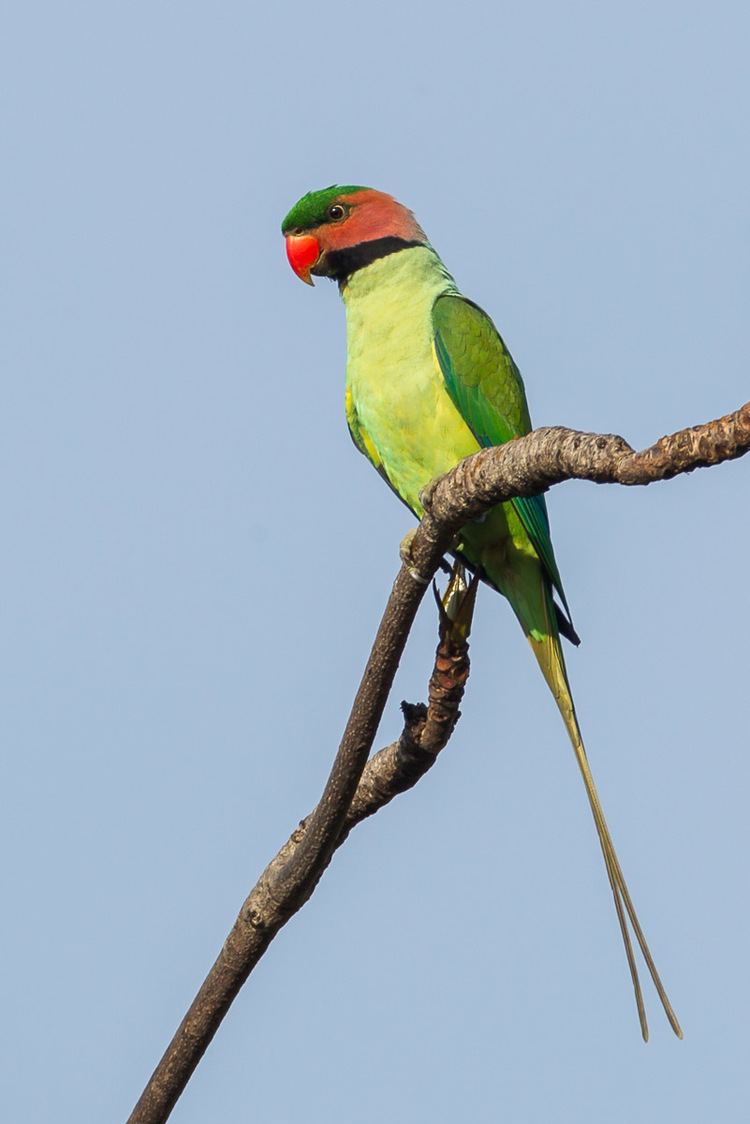 | ||
Similar Bird, Parrot, Psittacula, Blue‑rumped parrot, Slaty‑headed parakeet | ||
Long tailed parakeet
The long-tailed parakeet (Psittacula longicauda) is a parakeet endemic to the regions of Andaman and Nicobar islands, Sumatra, Borneo and Peninsular Malaysia (including Singapore). It is allopatric with the congener, the Red-breasted parakeet, Psittacula alexandri, except in the Andaman islands where they occur together.
Contents
- Long tailed parakeet
- Long tailed parakeet eating starfruit
- Taxonomy
- Description
- Habitat
- Ecology Behavior
- Threats
- References
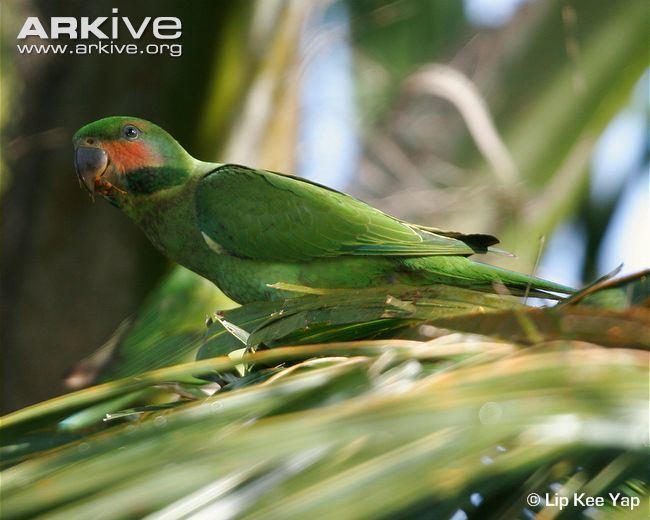
Long tailed parakeet eating starfruit
Taxonomy
Five subspecies, which may represent different species, are currently recognized.
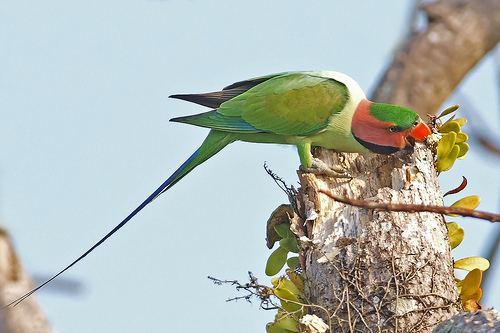
Description
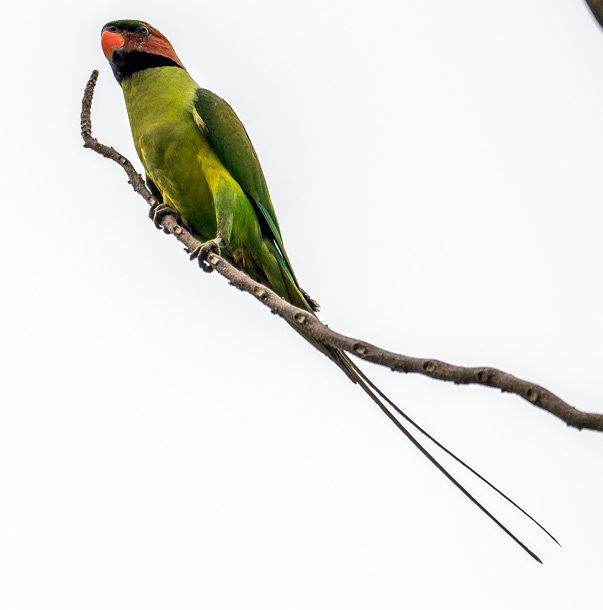
It is mainly green with a long blue tail. The male has a black cap and red face. The female lacks the black cap and has less red.
Habitat
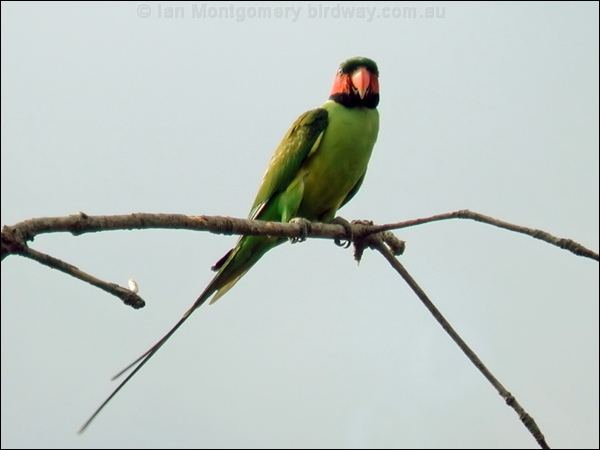
The long-tailed parakeet is able to live in a wide variety of habitats such as in swamp forests, lowland evergreen forest, oil palm plantations, coconut plantations, gardens, public parks, and is a frequent visitor to agricultutal areas (especially those who yield tropical fruits and seeds). It is usually seen in elevations of up to 300 meters.
Ecology & Behavior
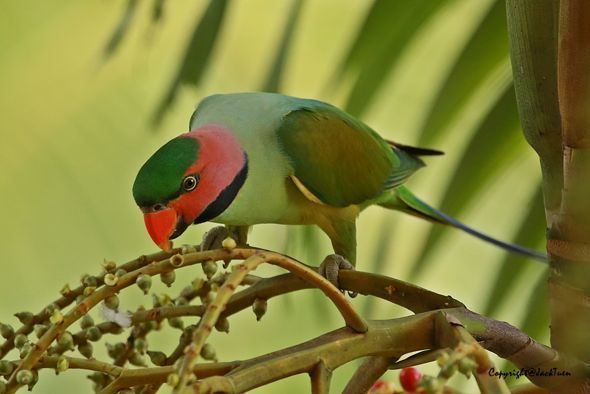
The long-tailed parakeet is an extremely social bird, always seen communicating with other birds of its species. Even though small groups are usually seen, flocks of thousands of birds have been in the Andaman Islands and Borneo. However, the large flocks tend to appear during breeding season. It is a colony breeder. Birds on the Malay Peninsula tend to breed from December to February while birds on the Nicobar and Andaman Islands tend to breed from February to March. Females tend to lay a clutch of 2 to 4 eggs approximately 30.5 x 24.5mm. It usually takes about 23 to 24 days for the eggs to hatch. Chicks fledge at around 7 weeks old. It's diet consists of a variety of berries, papaya, areca nuts, a wide variety of cultivated and wild fruit, seeds, and cultivated grains such as corn. It is a curious species, as it is often seen playing with sticks or other materials found in its environment.
Threats
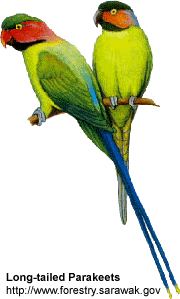
Much of the long-tailed parakeet's natural habitat is threatened by deforestation and illegal logging. Capture for the illegal pet trade is also a threat to the survival of this species.
